Audi S4, RS4, RSQ8: When they’re calling last drinks …
/It’s a celebration of performance quattro cars …. from the subtle to the ultimate stomper … as changing times approach.
WHO will bet against the respective heir apparents to the blitzers here being even quicker off the mark, perhaps faster overall, more aerodynamic, higher tech, a lot cheaper to refuel and … inevitably … a lot less raucous?
Just reiterating – and not doing so cheerily, in case you’re wondering – that what you see here is doomed.
Not straight away. Not for ages, actually. But ultimately. They have no future.
Because? Well, I know it’s tiresome and perhaps even disheartening to hear, but the future is electric. And not just partially so, with the 48 volt assist and plug-in tech we have now.
Ultimately, there will be no room for fossil fuels. Perhaps even before there are no fossil fuels.
But those days have yet to come. In the meantime, we pump on. Perhaps with thought that, if and when you’re personally going to have to face up to making a flying farewell to burning hydrocarbons, it’ll be in roaring style.
There are plenty of old-style performance opportunities to hook up to, but today’s focus is on three common purpose cars from a brand that has made quattro a household name. And, in doing so, has developed a wide spread of fare that often wins credit as being ultimate daily-driver performance cars, through melding sometimes brute force with all-weather traction, comfort, space.
The RSQ8 sports utility, RS4 and S4 Avants have broad commonality in purpose; they’re all aiming to deliver some degree of practicality with pace. In addition, they’re all jam-packed with safety and assistance tech.
Adaptive cruise control with traffic jam assist that can steer, brake and accelerate autonomously at slow speeds, an exit warning system for avoiding dooring cyclists, active lane assist to steer the car between the lines, a swerve avoidance system, autonomous emergency braking (AEB), blind spot warning, high beam assist and rear cross traffic alert … a lot of cars could stop there and look good, but for Audi these are just a few of many common enabling elements spanning all three. Multiple airbags are standard, as are 360-degree surround cameras and auto parking functionality. As well as all that, each delivers a lot of luxury.
Do the salient points of difference come down to how they perform against the clock? Obviously, that will be considered because … well, that’s the game they play. In saying that, if you’re talking about which makes the heart beat fastest, let’s just agree now that even the tamest, the S4, is still a titan. It has more than enough oomph to run rings around our driving condition.
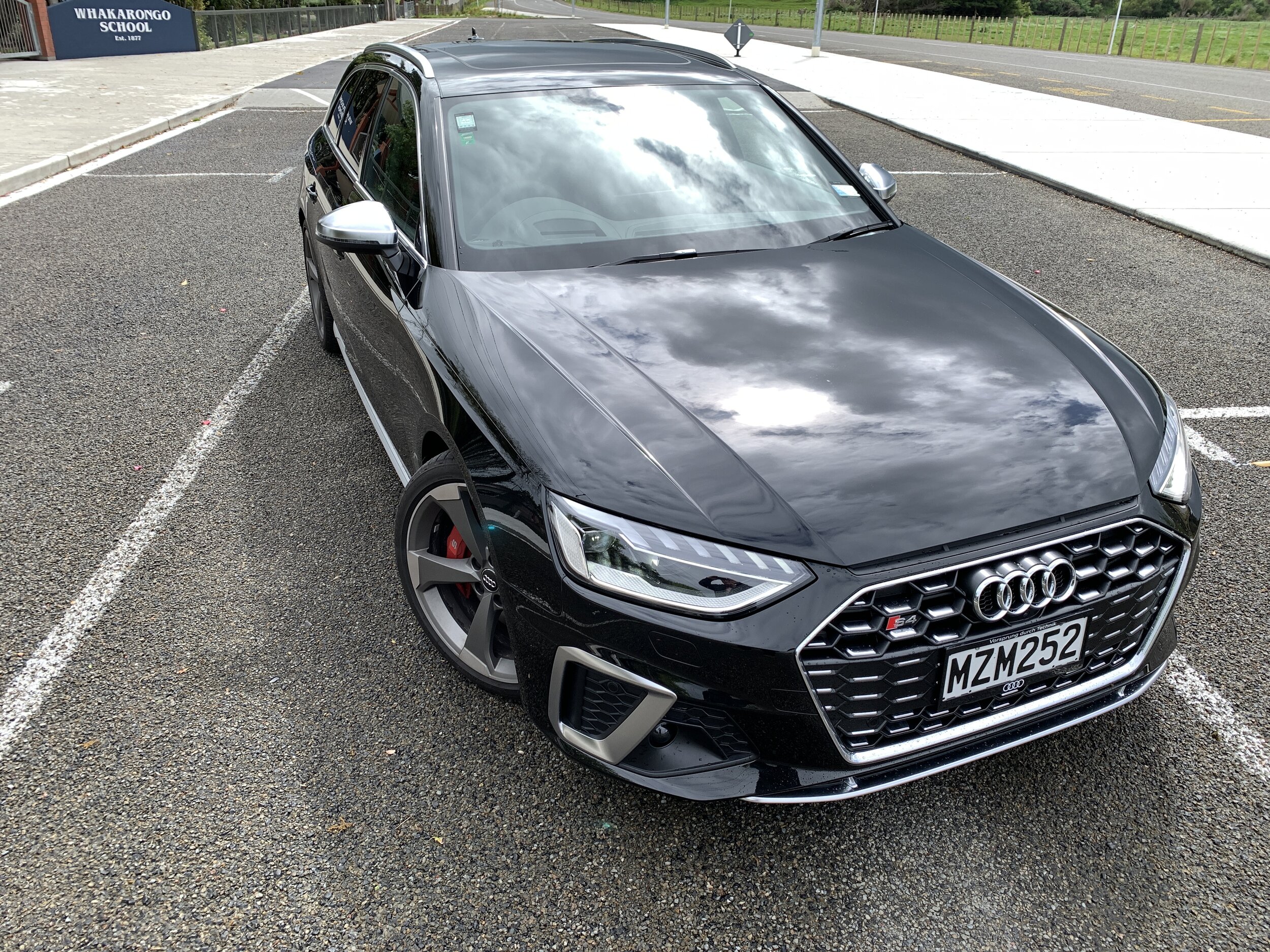
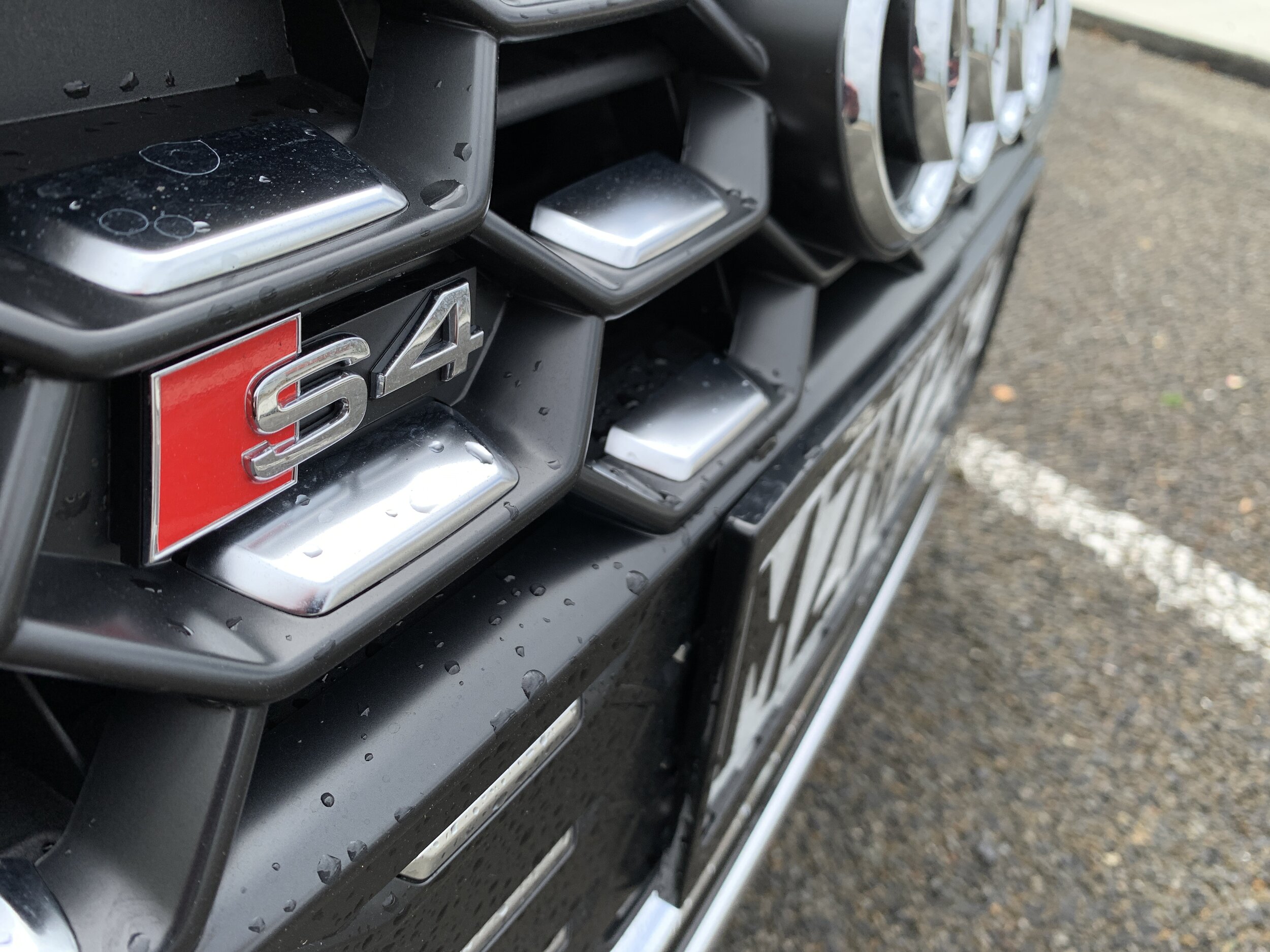
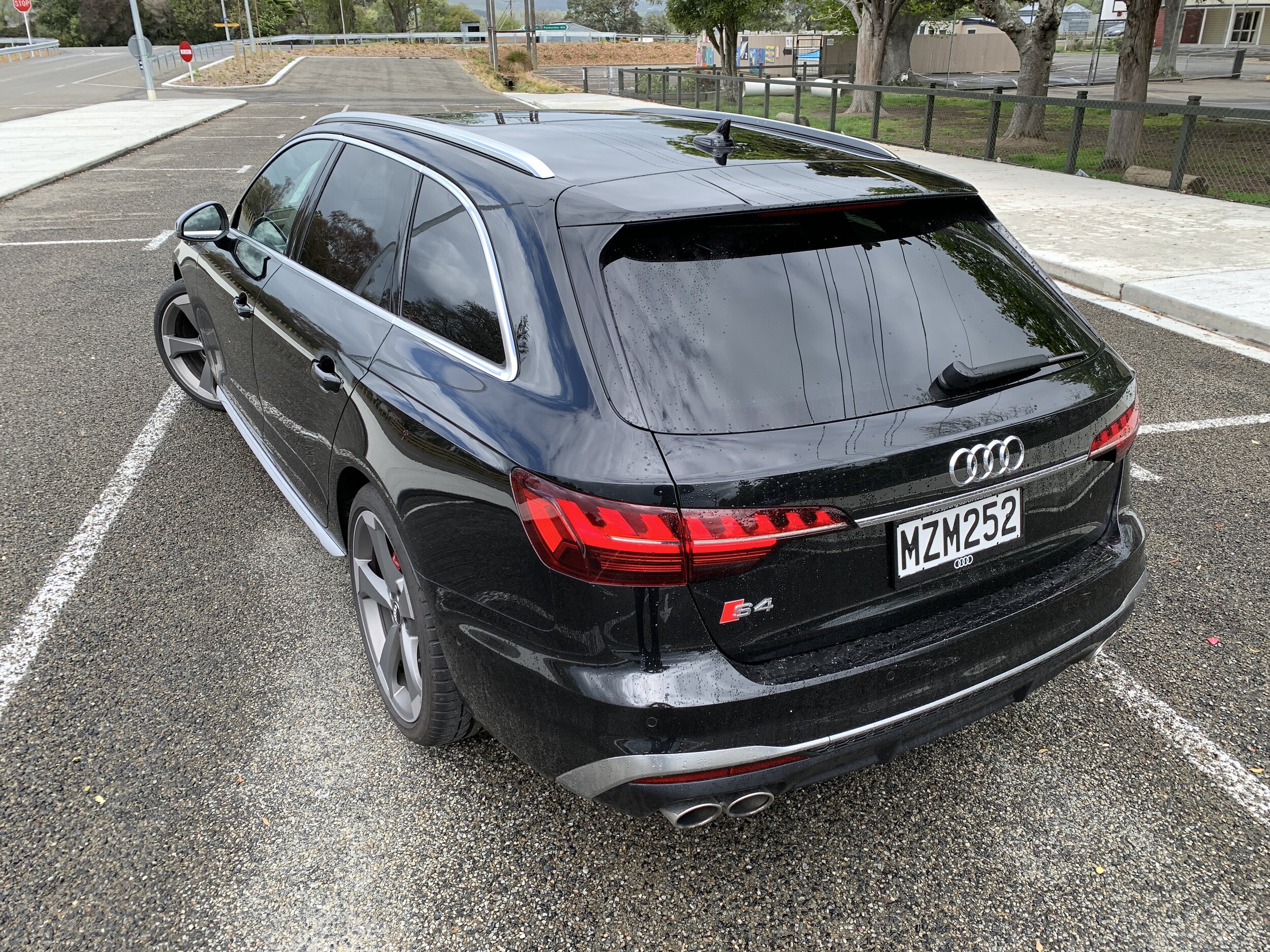
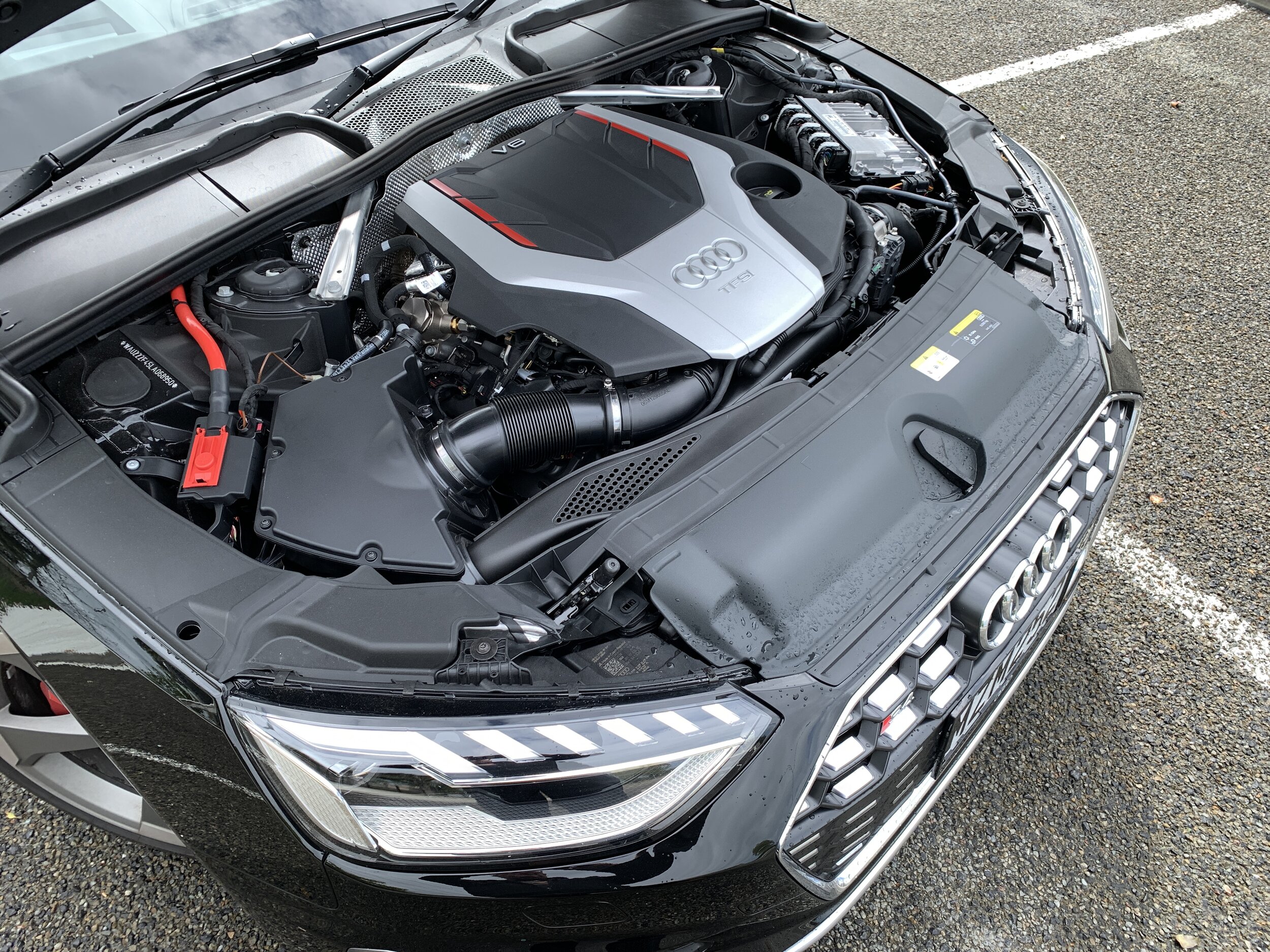
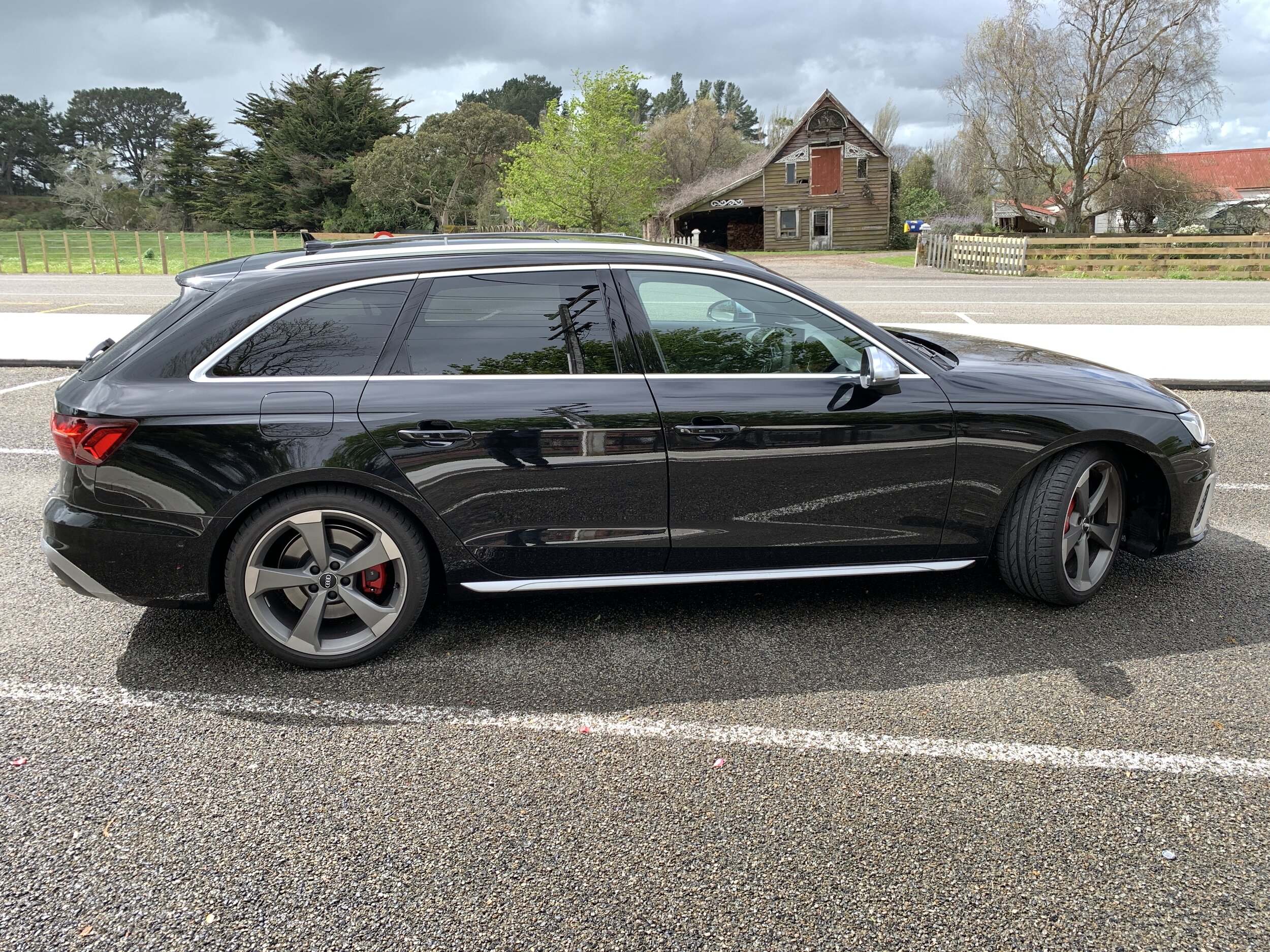
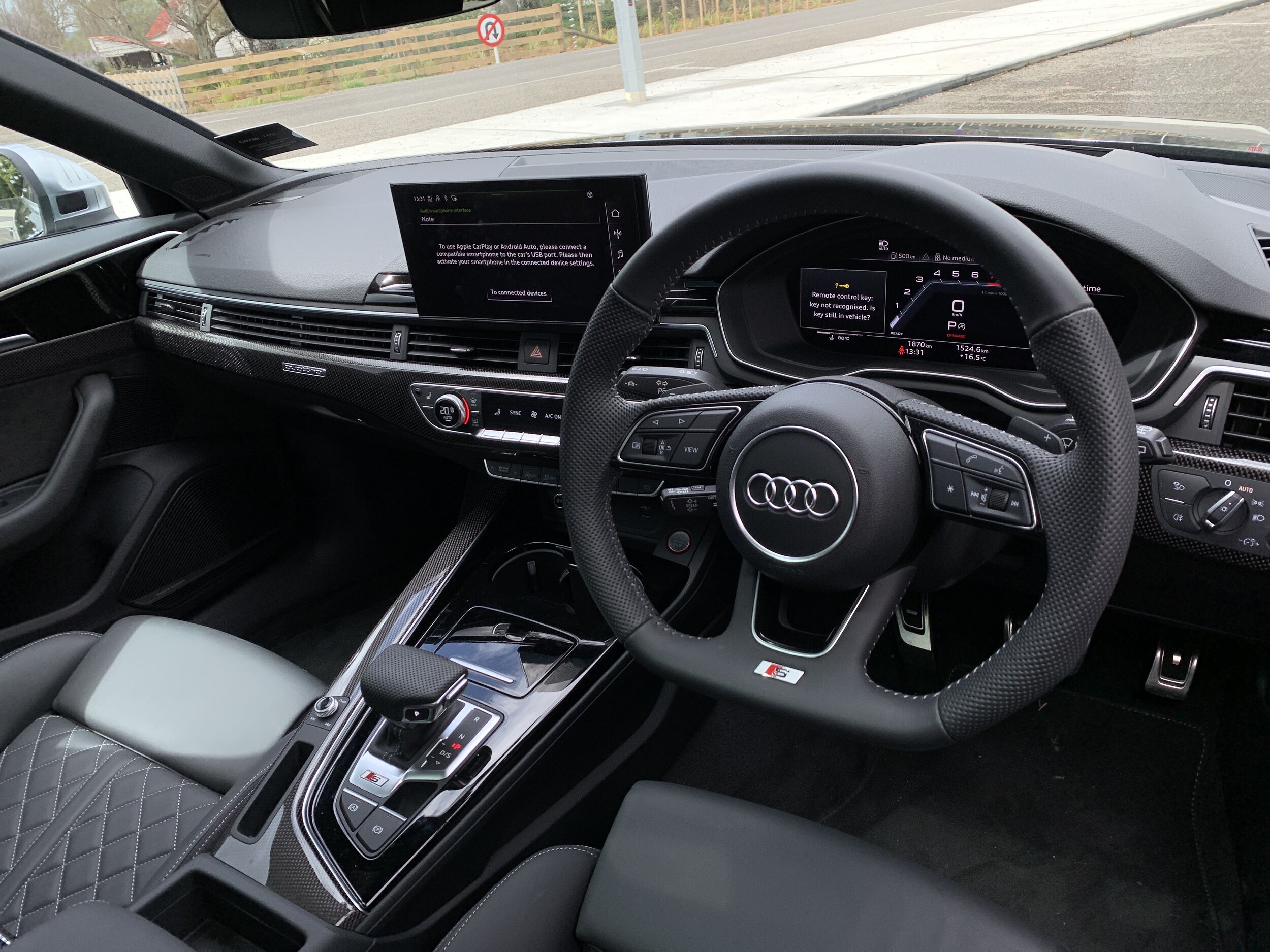
So there’s this, and of course, there’s the size of spend, which today ranges from a small fortune to … erm … a somewhat larger one. How imperative is that? Is it fair to assume the more you spend, the more you get?
Time to consider the options ….
S4 Avant
Price: $122,500
Powertrain and economy: 3.0-litre twin turbo-petrol V6, 260kW/500Nm, eight-speed automatic, AWD, combined economy 7.9 L/100km, CO2 179g/km.
Vital statistics: 4745mm long, 1842mm wide, 1411mm high, 2825mm wheelbase, luggage capacity 500 litres, 19-inch alloy wheels.
We like: Feistier feel, strong drivetrain, wagon practicality.
We don't like: Dated and awkward infotainment, inevitable dynamic limitations.
INGOLSTADT’S ‘S’-badged cars tend to ultimately have a tough assignment; they’re obviously more performance-focussed than the standard models they derive from yet are clearly destined to be outshone by the harder-edged RS product.
Even so, it’s reasonable to say the bar keeps rising, and it does so for all. That shows with this model; today’s S4 is as grunty as yesterday’s RS4. So though the 0-100km time of 4.8 seconds has been bettered by the next-step-up Renn Sport edition, by all means the S4 cannot be considered tepid in any way, not for punch, nor for pedigree.
Especially not the latter. If you’re among those who wonder if the S4 is just as much about elegance as it is about being an entertaining drive, bear in mind now that one of the powerplant’s attractions is that it was co-developed with Porsche. Not a brand known for being half-hearted about grunt.
In updated form, this unit is packing significantly more heat than it did previously. You be forgiven for not immediately twigging to this, because it doesn’t explode into existence like the RS’s engine, instead delivering just enough of a subtle thrum to tell you this is no ordinary Audi. Of course, you need just give it a touch of squirt to discover there’s a lot of impatient energy waiting to be released, but even when it is is, there’s nothing too raucous about.
Which is to be expected. The entire ideology of this breed depends on it. While it’s arguable whether ‘S’ cars are still halfway house choices, it’s still clear that the letter could easily be a shorthand for ‘sleeper’. In look, if not necessarily action. Audi recognises not everyone desires full RS brashness. Some prefer a more civilised, velvet glove approach. That’s this car’s job. And it does it very well.
It’s not so innocuous as to be anonymous, yet the approach is more careful and considered than with anything coming out of RS. Avoiding the outrageous means no flared wheel-arches, no rear wing and only the slightest hint of menace from the quad exhaust pipes, subtle body kit and 19-inch alloy wheels.
A predator hiding in plain sight? You’re onto it. Though, truth be told, the camouflage has slipped a bit in latest form. For one, just the small shift to a racier wheel styling for this mid-life facelift has been enough to less covert in its intentions. No complaint, either; that adjustment – plus some trim and minor styling changes – are good for the car.
Also, while the idle is refined, that’s not to say it lacks an aural signature. As the revs rise this direct and multipoint injection unit gathers quite a lot of volume and pitch, not outright Ray Winston gravelly but instead higher-toned, yet nonetheless delivering a beautifully modulated timbre. This time, too, the song is natural rather than computer-enhanced. It’ll rev happily right to redline and you wouldn't know it was turboed, either, if not for a faint whistle, such is the crispness. No exhaust burps, growls and pops, though … it’s just not kind of car.
The car’s laidback styling ambience is blown apart by the acceleration; the thrust is surprisingly mega and, of course, as in the others here, nothing is wasted in wheelspin. The back end hunkers, there’s a bit of squirm and then you’re off. As entertaining as that side is, the better and more informative thrill comes from feeling how effortlessly muscular it is in the 80kmh to … well, best not say, range.
That’s reflective of how it generates peak torque from just 1370rpm and sustains it until 4500rpm. With peak power occurring between 5400rpm and 6400rpm, you might wonder if it has any gaps in the oomph, but I couldn’t discern it. When full boost hits, it pushes with astoundingly resolute determination. The claimed 0-100kmh sprint time now is only just fractionally better than that quoted for its predecessor but don’t sweat that. What’s more worth sharing is that it's on par with the 2015 RS4 Avant, regardless that the latter has more power.
The eight-speed ZF transmission is a superb accomplice, slipping through gears snappily, though not with the ferocity found in the other models here. Nonetheless, it is a good consort and unafraid of actioning into a sporty driving mood, with rapid downshifts slotting in at 5500rpm.Alternately, it will behave with full civility when cruising.
The full-time quattro AWD system shuffles up to 85 percent torque to the rear axle via a mechanical centre diff, while defaulting to 40/60 front/rear when cruising, and grip levels are compelling.
The rear-end propulsion bias gives the car a nice balance through corners when pushing; that the S4 sits 23mm lower to the ground than regular A4 models and has fat performance-tuned rubber also allows it to have a higher cornering speed threshold. Ultimately, though, it always maintains as a really well-sorted road car; again because that’s just expected of the type. A full-out racer for the road feel is an RS remit. All the same, even at S level there is relatively little body roll or pitch, with ride firmness increasing when the dampers are set to Sport.
Steering isn’t as brilliant for feel here as with the RS4, but it’s more on top of things in respect to accuracy and the specification delivers decent brakes, notably 350mm front discs with six-piston callipers, so if you need to pull up quickly, it’ll oblige.
In terms of cabin fitout and comfort goes, it’s not quite RS in that there’s carbon fibre inlays but the seats aren’t to the fullest sporty styling, yet you know it’s definitely a step up from the mainstream.
The luxury is right up there and though it has slipped a little on the technology side, mainly in respect to infotainment and instrumentation – the RSQ8 is a generation ahead of both Avants in that respect, with its full glasshouse dash, more advanced MMI interface and integrated wireless charging and Apple CarPlay hook-up (here, you need a USB cable) - neither does it feel outmoded. Though maybe it will in a year or two. The flat-bottom steering wheel is the same as in the RS4, but without some of features.
The A4 Avant is not quite large enough to come across as being commodious – for that, you need the A6 – but there's reasonable room for rear seat passengers and the luggage space is fair, expanding three-fold with seats down.
Audi’s S models are good go-to cars for getting a sense on how Audi enables improvement; they’re all smarter and sharper than their predecessors. The S4, now, has crept so closely to the RS4’s territory you wonder what the next move could be.
RS4 Avant
Price: $153,500
Powertrain and economy: 3.0-litre twin turbo-petrol V6, 331kW/600Nm, eight-speed automatic, AWD, combined economy 9.2L/100km, CO2 208g/km.
Vital statistics: 4781mm long, 1866mm wide, 1404mm high, 2826mm wheelbase, luggage capacity 505 litres, 20-inch alloy wheels.
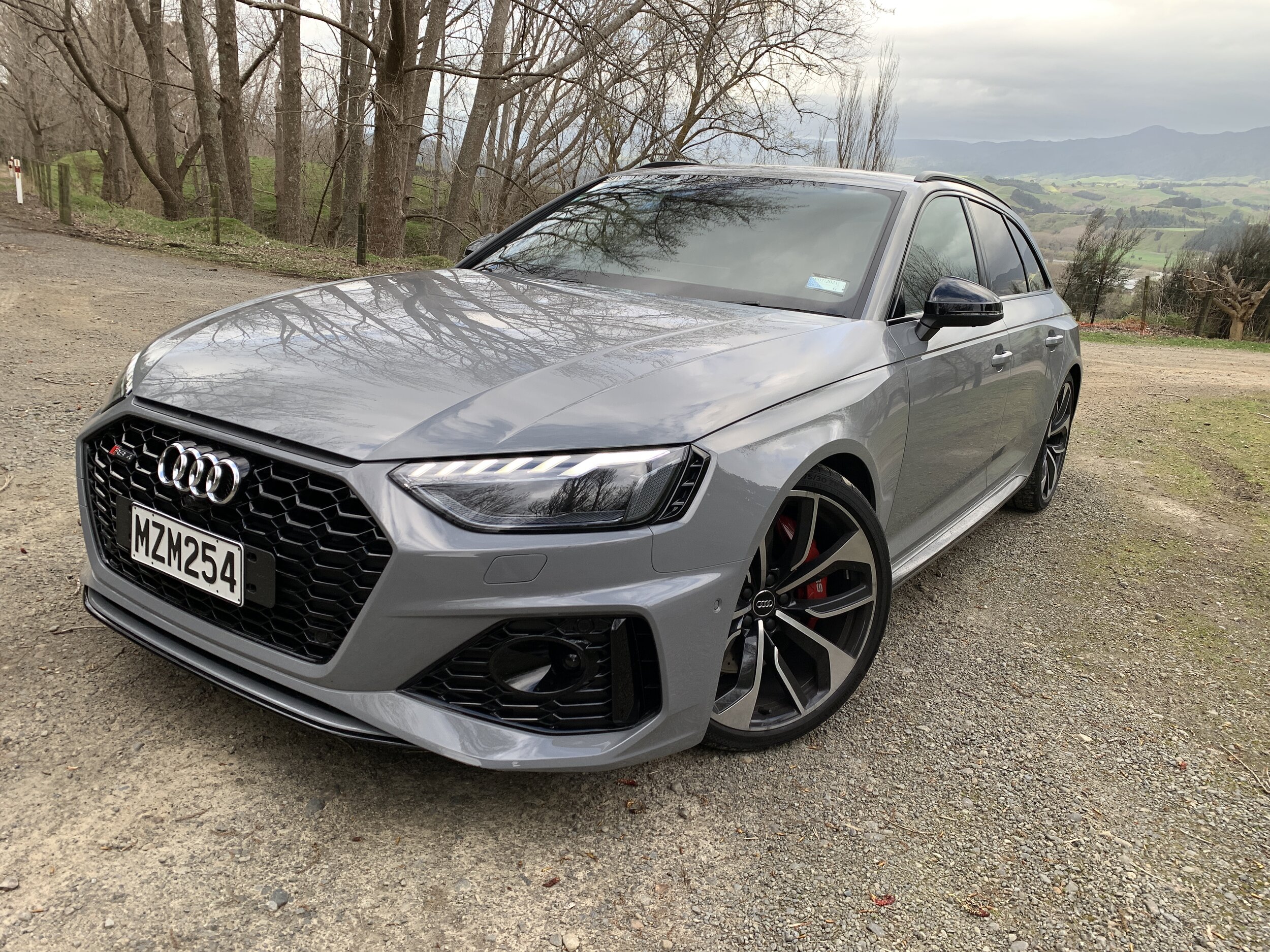
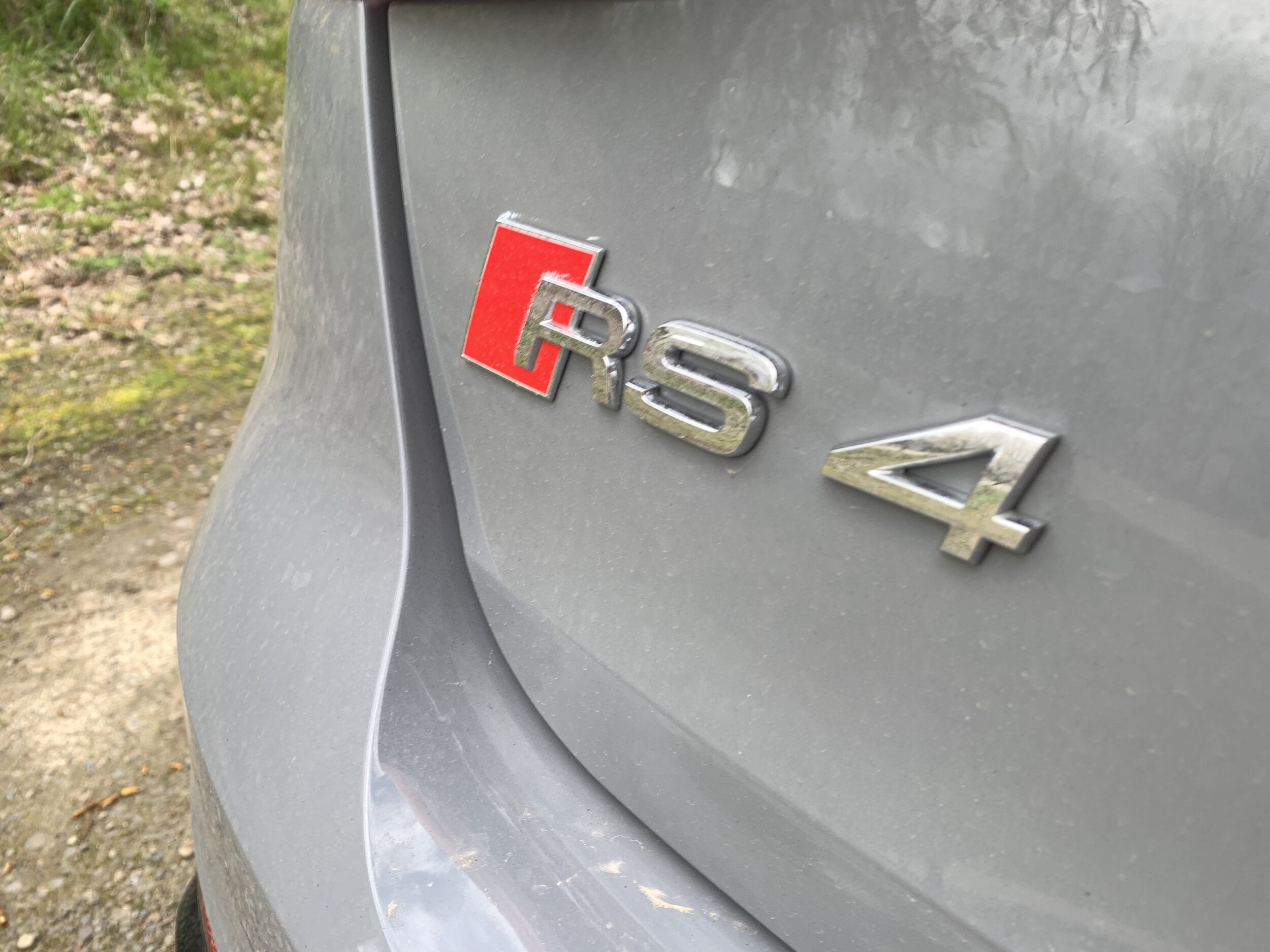
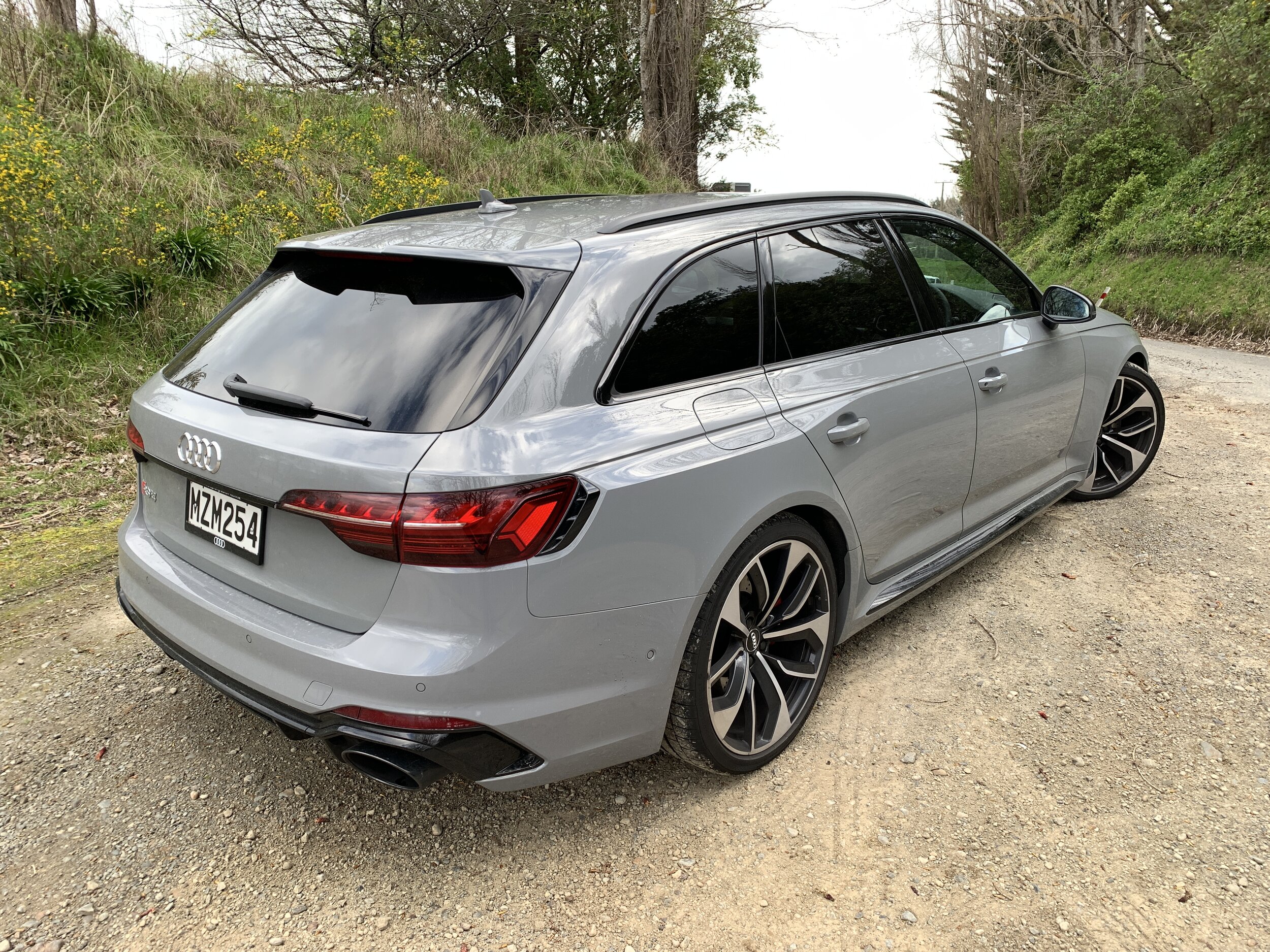
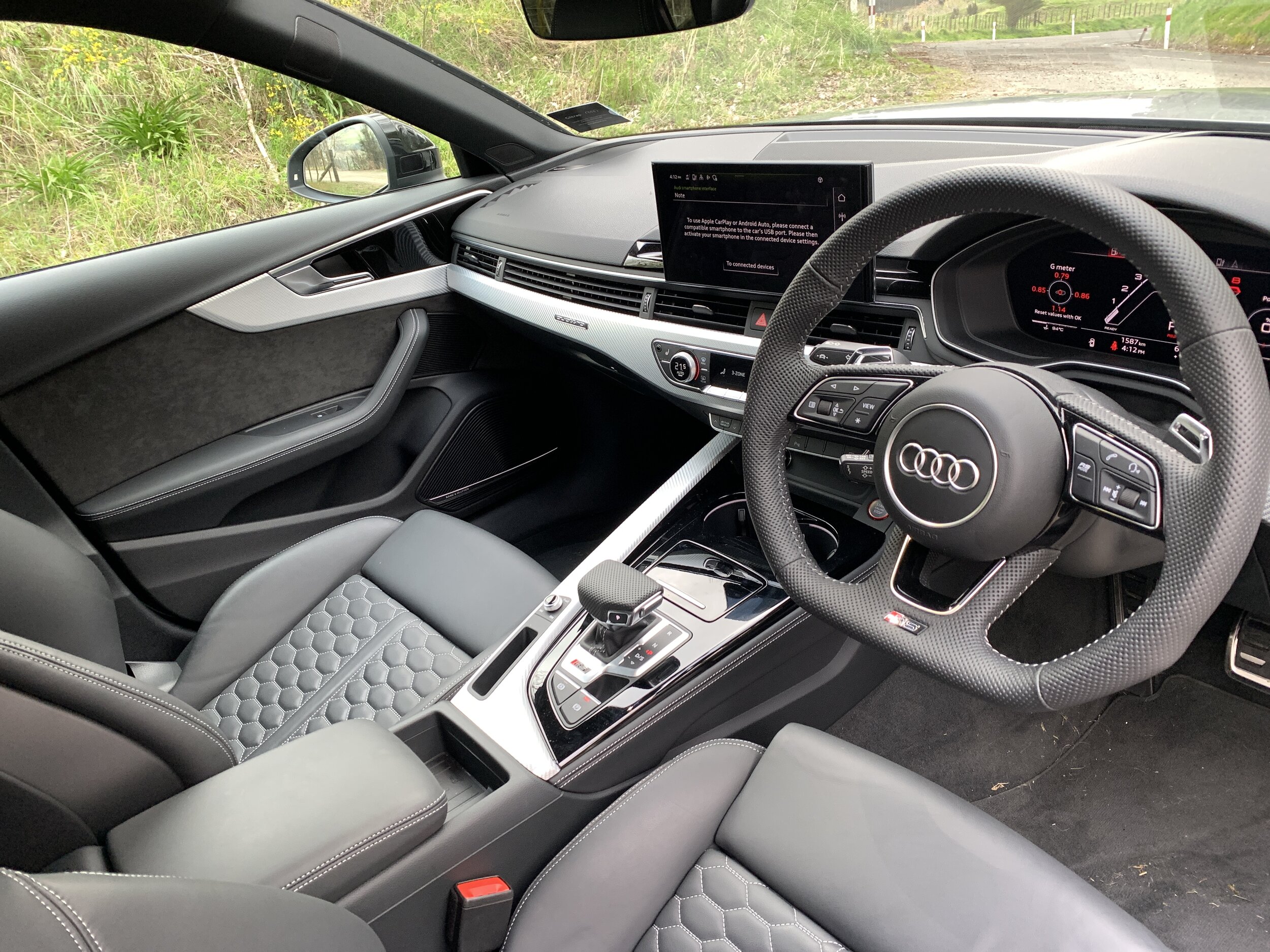
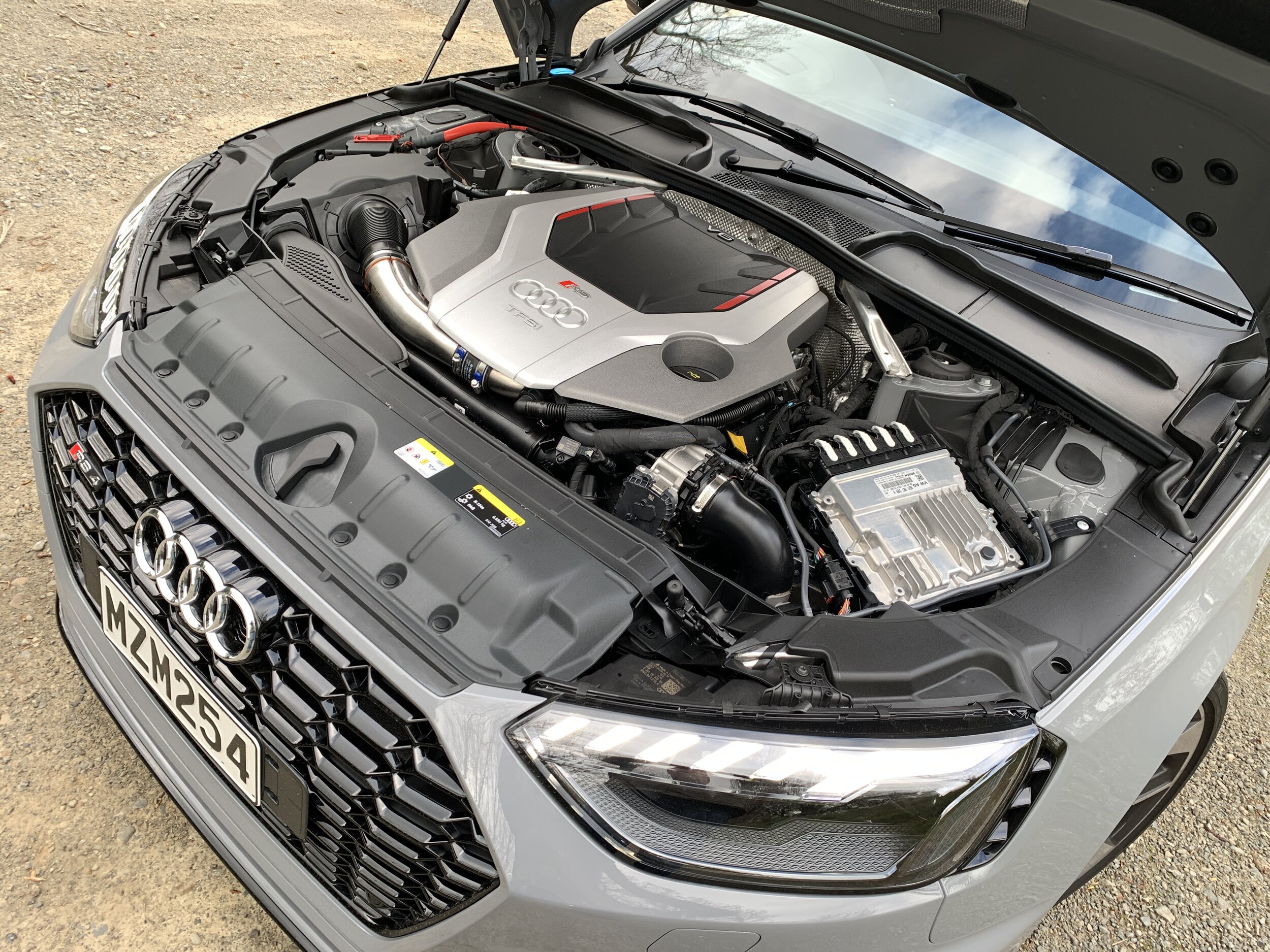

We like: Still the best RS, awesome on a windy road, only slightly pricier than an S4.
We don't like: Same infotainment quirks as S4.
ONCE it was The One for our market – now it’s just one of many.
Audi’s performance division has been banging out RS cars since 1994 but they aren’t always as they used to be. The RS badge attaches to a massive family and, with consumer tastes having now swerved tangibly toward sports utilities, the strongest sellers are increasingly based on higher-riding vehicles.
That’s been a bonus for Kiwis. RS car production has steadily bumped up over the years and a fair few have come to New Zealand, enough to often give us the world’s best per capita ownership in any given year, mainly because we seem to embrace everything that joins this clan.
Where does that leave original flavour product such as the RS4? Thankfully, still in the hunt. As much as the swing toward sports utility-based editions is now obvious and these have taken over as the preferred choices, the distributor has never countenanced quietly slipping the Franken-A4-stein wagon out to retirement.
Instead, it remains in the pack, trading less spectacularly than it once did but still solidly enough on strength of provisioning supercar-rivalling stonk and dynamic purity in a package perfectly sized and sorted for our driving condition and style. The world’s best warp-speed wagon? I always thought so and driving the 2020 update does nothing to alter that view.
Even so, the S4 should conceivably have this car rattled, because it has become better than ever. Or so it might seem until driving the RS4. As much as the underling has something of the same panache, practicality and even performance punch, it still doesn’t blend those factors quite as completely and competently as the RS4 manages.
Sure, it has changed, most obviously when the 4.2-litre V8 was dropped, as it had to be. Do we miss the old engine? Logically, we shouldn’t. Today’s biturbo outputs the same power and a lot more torque, drinks less fuel and is demonstrably a better drive. But honestly … well, yeah, there’s still a twinge at emotional level. If I had a chance to reacquaint, well … it’d be hard to say no.
At same token, the RS4 is still a hero and a special thing; a well-crafted, belting monster all-rounder occupying its own rarefied market segment.
What’s changed for the 2020 model year? Not too much, all in all.
Trainspotters will cite those funky LED lamp clusters front and rear, which have distinctive patterns within them, and the triple-slats cut into the nose of the car above the radiator grille as adjustments of significance. Less well-informed punters might not even realise they were absent previously.
Mainly, it’s no more altered than the S4 has been. The 20-inch alloys have been restyled but none of the bodywork. Inside the 12.3-inch 'Virtual Cockpit' dashboard has been refreshed, as have the graphics on the 10.1-inch infotainment touchscreen sitting perched atop the dash. As in the S4, this still looks a bit dated and operationally is a bit of a pain; mainly because it looks like a touch screen but isn’t. Instead, you need work through the menus with a toggle. Such is the pace of change within cockpits, right? A few years ago, this was state of the art. But now fully modern Audis all have three screens and haptic – even touchless – everything, it’s all a bit ancient.
Moving on to the drivetrain. All the core outputs, consumption and performance data appears to be a re-read of the material first issued several years ago. There are technical revisions, but the biggest influence on the way the car performs results from it going on a diet.
The 2020 version is an astounding 45kg lighter than the pre-facelift model. You’d think they’d need to drop something major, perhaps a seat, to achieve that, but in fact it’s all behind the scenes. Or, at least, the door and roof coverings and the firewall as Audi attributes this to a reduction in sound-deadening, in the main. For all that, it’s not a distractingly noisy car when on the move; yes, there’s tyre roar over coarse chip, but that’s always been a factor and doesn’t seem any more intrusive now.
Refined? Not really. Unsurprisingly, because it is a high-tier performer and because Germany has smooth roads, NZ doesn’t (and guess which surfaces the RS was tuned for) even the softest suspension tune is firmer than the equivalent in S4 format.
However it’s not as race car rigid as previously, which reinforces brand contention that the adaptively damped setup has been reworked to engender some amount of elasticity, this to enhance ride comfort without sacrificing an iota of the iron-fisted body control.
Apparently, the gearbox has been recalibrated to improve shift times, while the quattro system is also tweaked, though it continues to favour a 40:60 front-to-rear-torque split, sending as much as 85 percent of torque to the back axle when required.
Little refinements, yes, and in isolation it might be challenging to determine how different the car is now against how it used to be, but what does impress is the high ongoing degree of driver involvement.
Traditional quattro talents are strong with all three cars here, but out of the trio on test it’s the RS4 that has the most naturally gifted handling. Those able to recognise that driver engagement relies just as strongly on dynamic finesse as it does immense traction and grip will have a ball.
Assuredly, it demands a racetrack if you are of a mind to push it hard enough to make it dance – and, assuredly, too, the hard-out settings that best suit the circuit are too overt for anywhere else - but even at sensible clip on engaging roads, it remains an especially involving car, capable of devastating displays of adhesion, pace and competence. And because it is less jumpy and jittery over surfaces, it is easier to place on the road and point through corners. With that in mind, a shout out for the steering; it's feel will restore faith in Audi Sport's engineers.
The hardest thing is harnessing the pace; once it’s on the boil, this engine really steams. You learn that ‘fast’ translates to something more extreme in German. It demands to be worked and rewards with a stunning soundtrack and impressive punch.
For all that, it needn’t have to be the utter hoon all the time. An ability to ‘mix ‘n match’ the car’s drivetrain and dynamic settings has long been a plus point. You might – actually WILL - want the dynamic engine/exhaust map cos it sounds fantastic, but could also prefer the softer ‘comfort’ suspension and steering. The RS buttons on the steering wheel are memory functions that can be used as shortcuts directly to your favourite settings.
Specific sports displays, a sports steering wheel, sports seats bulky enough to erode rear legroom (who cares, right?) and a few RS logos are all requisite and provided, but beyond that it is trimmed as equally for luxury as for hot-lapping. It feels beautifully put together with quality leathers for the seats and neat carbonfibre/metal trim pieces.
Such is the pace of technology change that the RS4 is fast heading into the realms of ‘old school.’ Yet what appeals, still, is what has appealed previously. As a fast and very serious road car, the RS4 remains very well judged. It’s a fine, thrilling and utterly addictive machine that also happens to be an effective hold-all.
RSQ8
Price: $254,650 as tested.
Powertrain and economy: 4.0-litre twin-turbo V8, 441kW/800Nm, 8-speed automatic, AWD, combined economy 12.1L/100km, CO2 278g.
Vital statistics: 5012mm long, 1998mm wide, 1694mm high, 2998mm wheelbase, luggage capacity 605 litres, 23-inch alloy wheels.
We like: Astounding technology exercise, great looker.
We don't like: Ultimately, an unconscionable exercise.
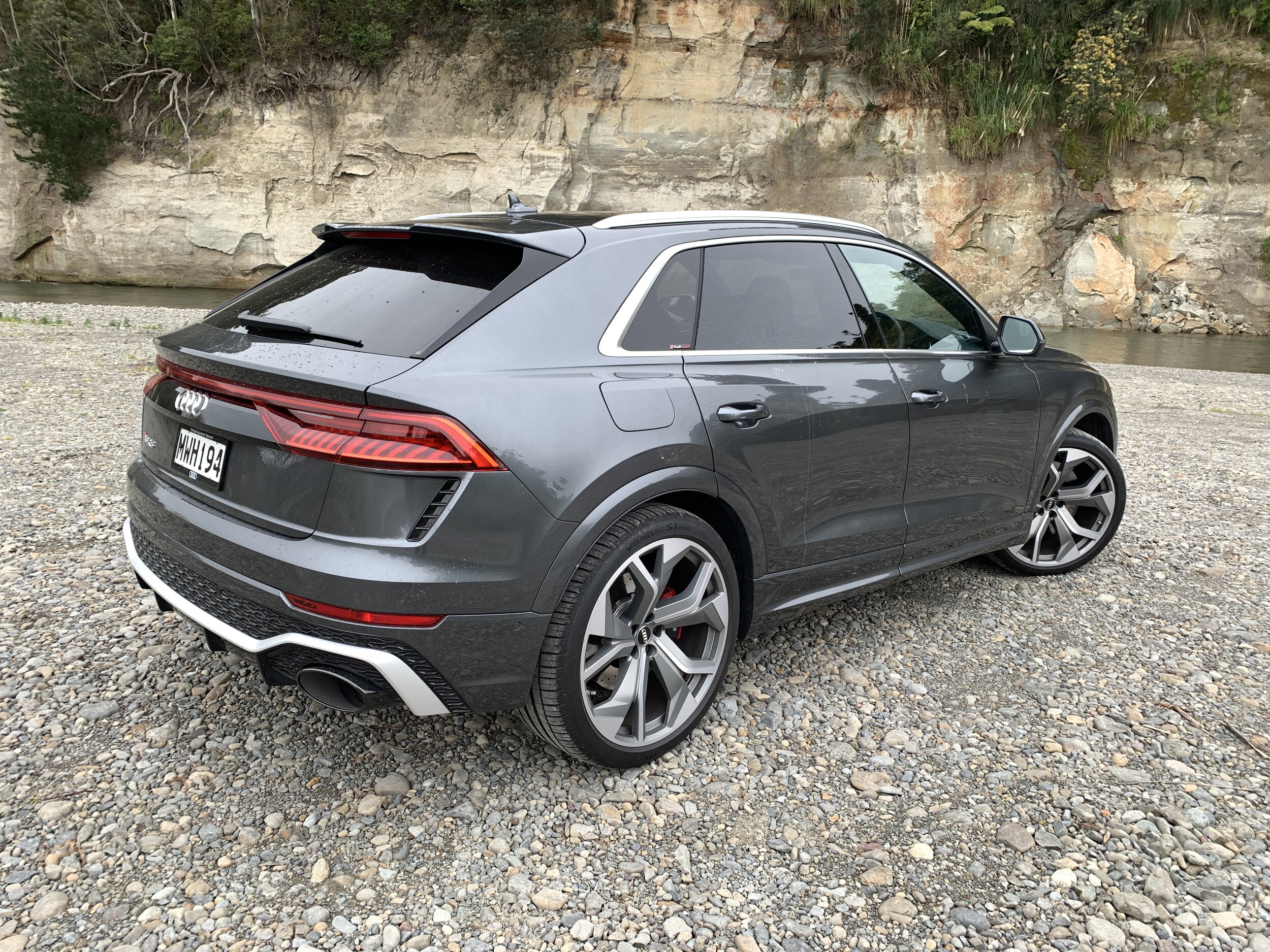
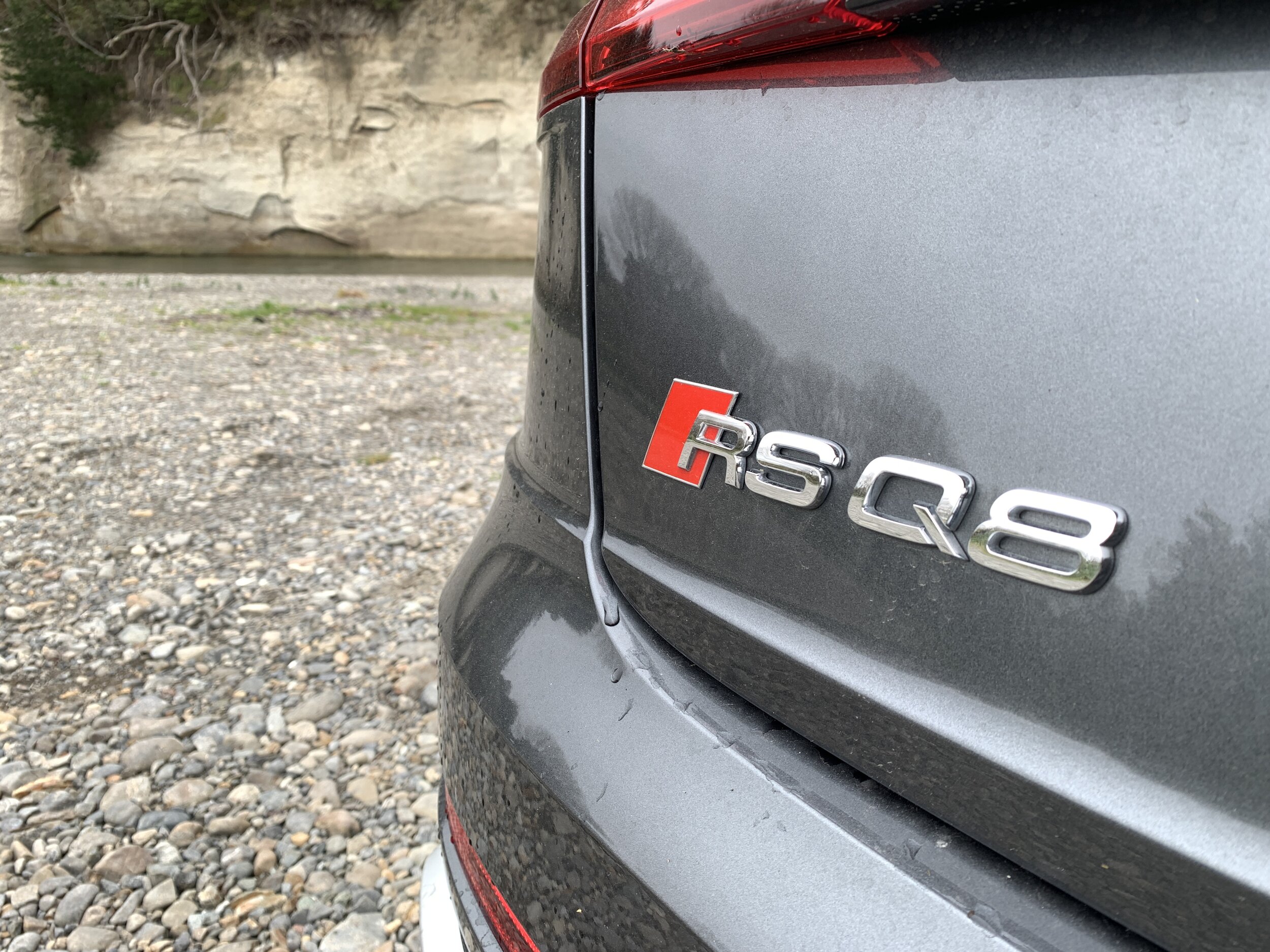
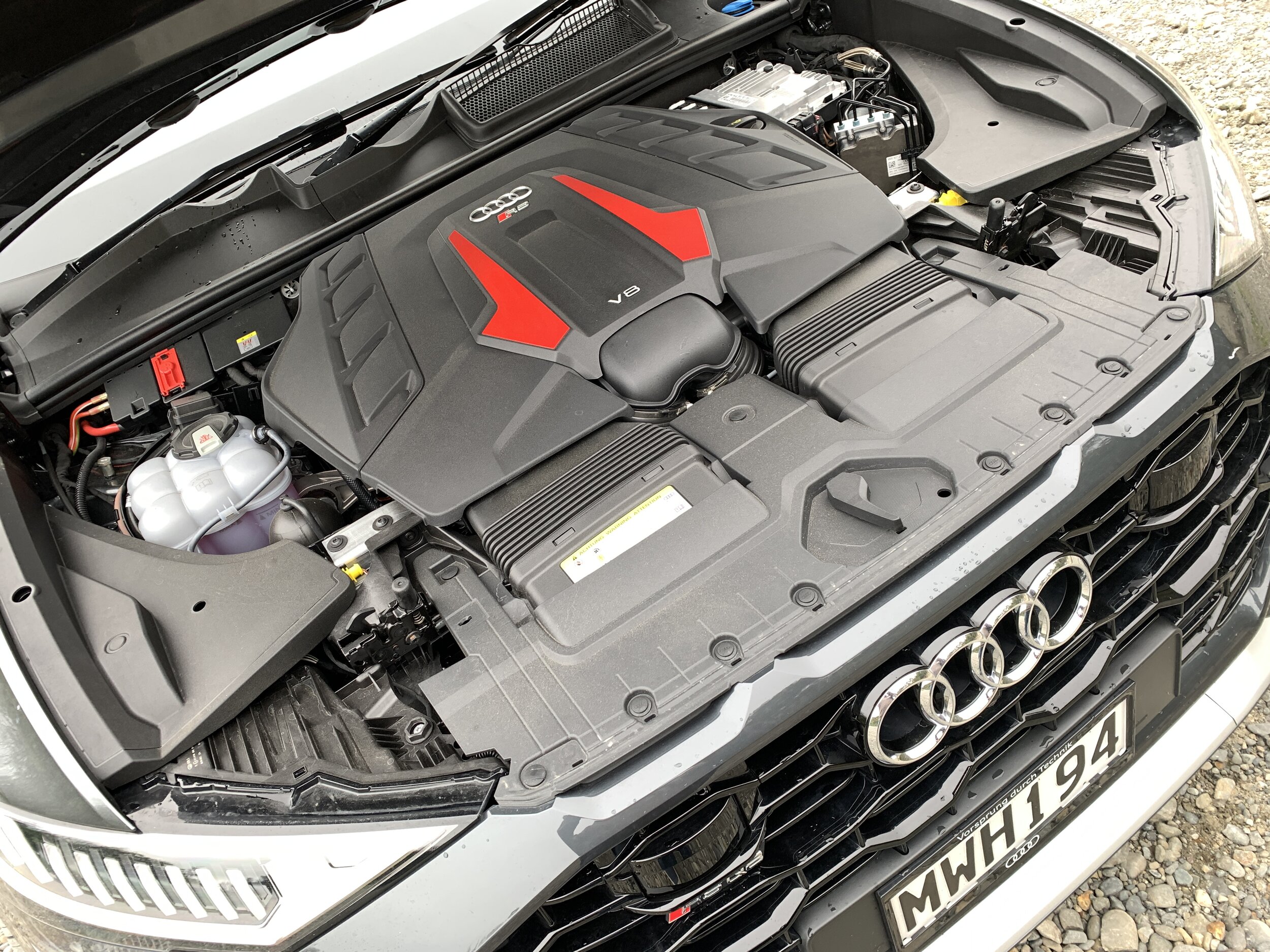
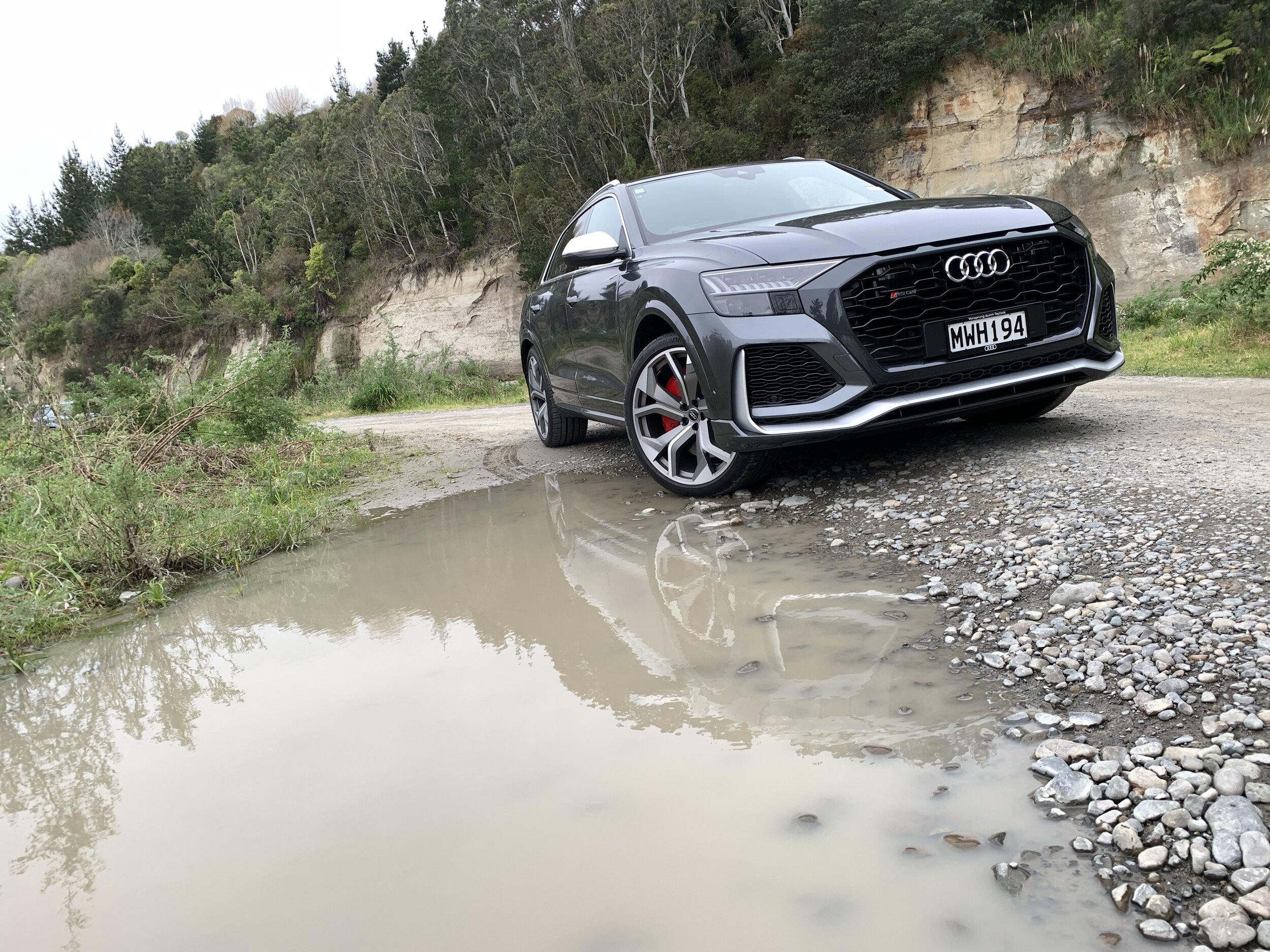
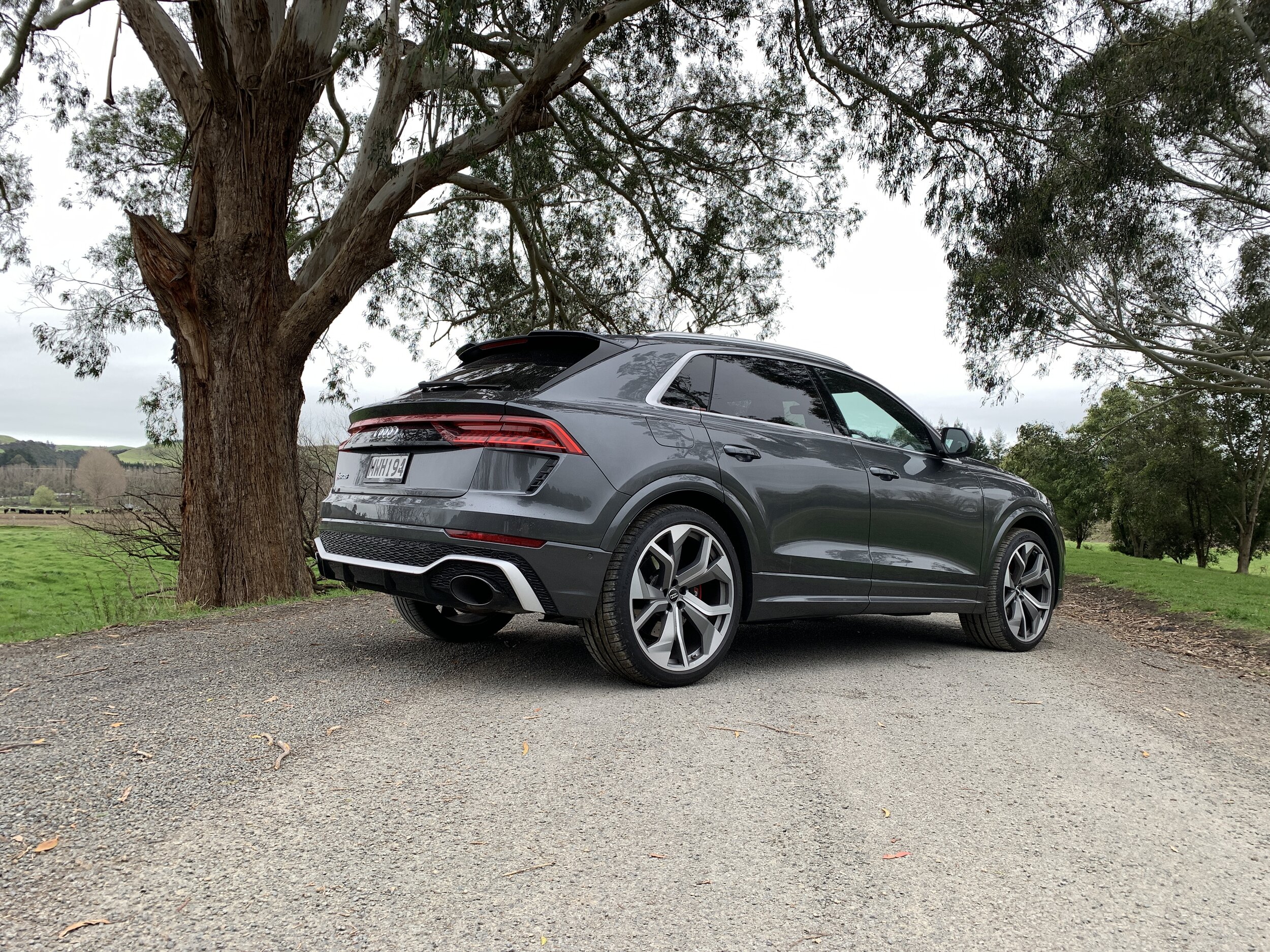
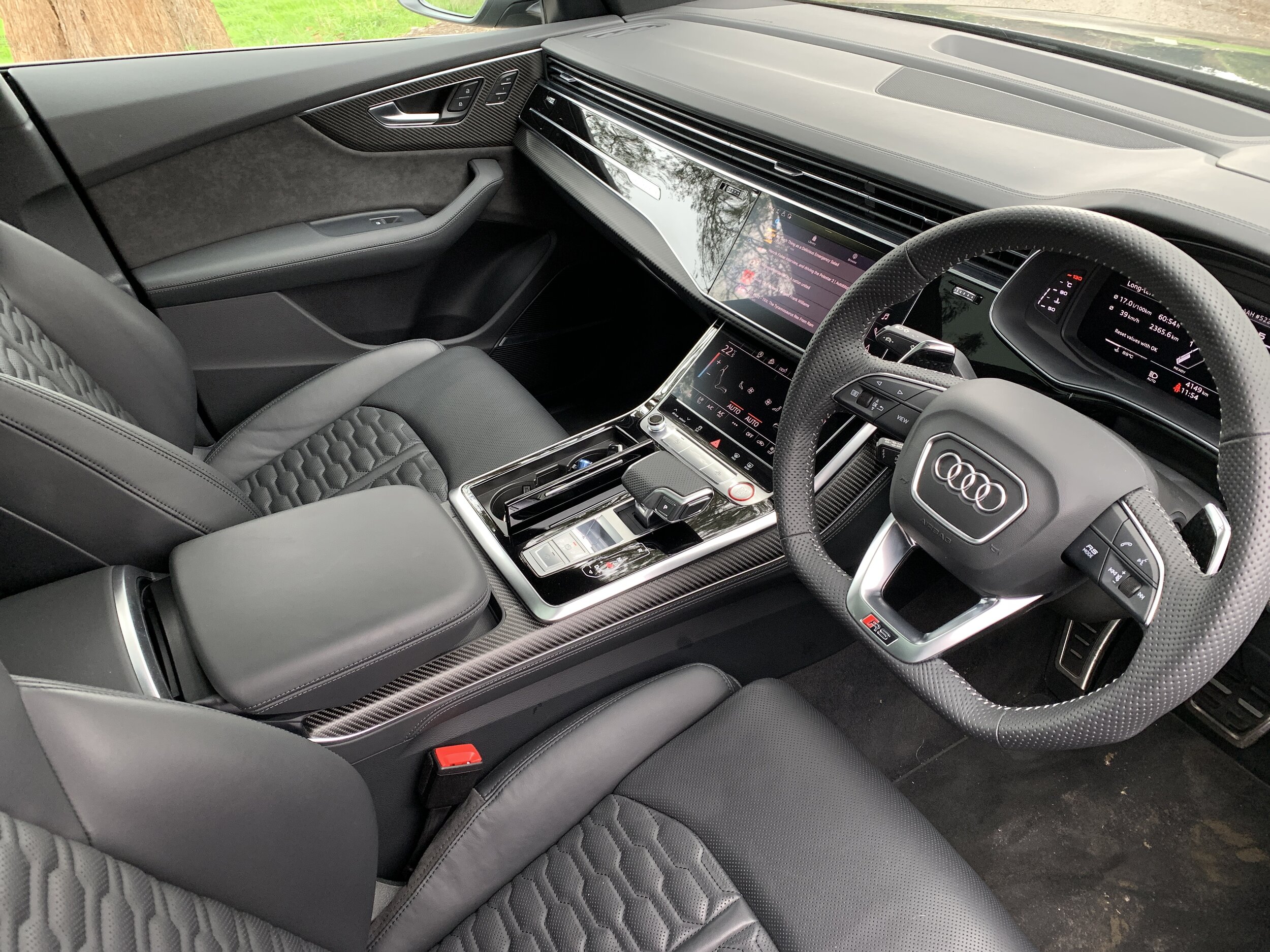

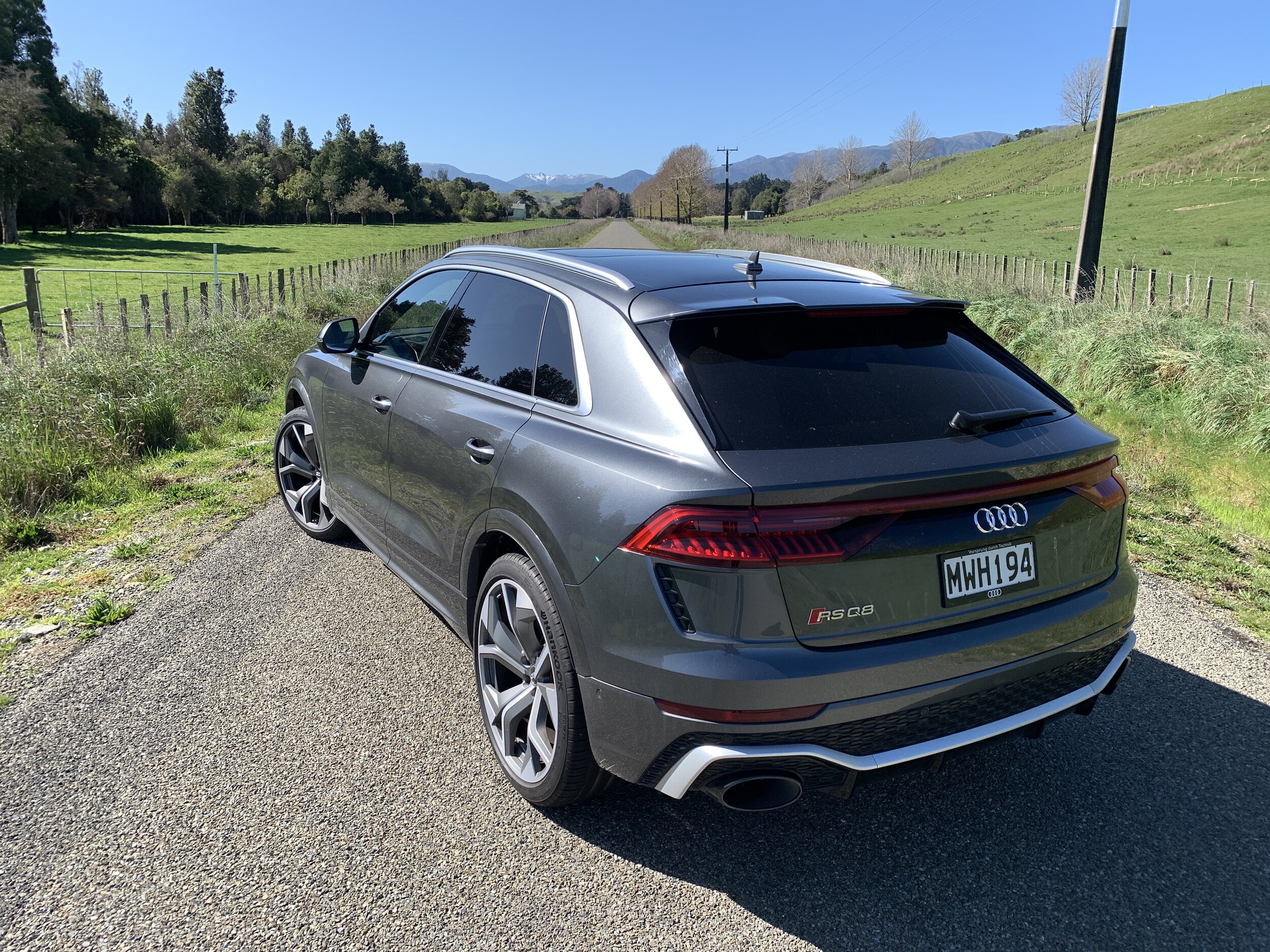
BLAME, or thank, Porsche … they took us down this route with the original Cayenne Turbo.
You know the story. Ridiculed on arrival, with purists pondering what damage to brand pedigree and purity this monster might wreck, Cayenne became a saviour, a best-seller and brilliant profit centre. And a pathfinder.
So many more of its kind since; some specialising in luxury, others trading on that plus, as this one does, hyper-performance. Almost all stomping all over environmental and efficiency sensitivities, every one destined to fall into a folder labelled ‘particularly divisive.’
Volkswagen Group is a dab hand. Q8, the Bentley Bentayga, Lamborghini Urus, the Audi Q7, VW Touareg and, yes, the latest Cayenne? All off a common platform. Smart, right?
So, quite a big gang of gangsters, then, and in some ways the RSQ8 could well be considered a potential mob leader; it’s basically a Urus with a German accent but shaped and kitted way better. (Sorry Lambo, but a fat SUV with vaguely Murcielago style cues looks even weirder than a Cayenne with a 911 schnooze).
It’s an interesting and intriguing play, not least because it arrives just when Ingolstadt has deeply immersed in the electric car scene. If any Audi stood out as the epitome of an ‘anti e-tron’, it surely has to be this machine: A super swanky, two tonne five-seater SUV coupe battering ram with a thundering 4.0-litre biturbo V8 – plucked from the RS6 Avant and RS7 Sportback –tuned to take it to the far side of 300kmh, possibly downing more fuel in that moment than the Chatham Island’s petrol station dispenses in a day when doing so.
Still, until there’s a law against it, why not? Anyway, setting aside all the ethical arguments, it has to be said that the RSQ8 is a heck of a technical achievement. And not a bad looker, either. All ultra-modern vorsprung with just a hint of villainy, and the classic RS hallmarks of a giant honeycomb grille, air intakes, body-coloured wheel arch spats, plus a deck spoiler and a pair of oval twin-pipes. Nicely nasty.
Colossal alloy wheels – 22s as standard, 23s an option that looked real good on the test example – are an awesome finishing touch. As said, if you’re going to end this petrol addiction period with a bang, best make it a big one.
The big rims are requisite; RS cars have big brakes. Or, in this instance, BIG brakes. These are 420mm front discs gripped by 10-piston, callipers, while the rear discs are 370mm items. And that's the standard spec, because RS ceramic brakes are an option, which are stepped up to 440mm rotors at the nose.
The need to scale up is obvious when this thing is measured or put on the scales; an RSQ8 not only takes up a fair bit of road space – it’s not tall or overly long, but is wide – and also tips the scales at 2315kg without so much as a driver onboard.
It takes a special kind of drivetrain and chassis setup to accomplish the mission of moving this amount of mass at high speed, not just down straights but also safely around corners. That and a whole lot of engineering talent.
Even taking onboard the engine’s robust outputs, I figured the Audi couldn’t possibly be as whacko wild as the Urus, which I’ve driven. So wrong. The Lamborghini effort is louder (and no surprise there), but you’d need to organise a drag race to sort which was quicker; on gut feel, the RSQ8 is right on the Italian job’s pace. It steps off and charges like holy stink, whipping through the legal highway limit with such insouciance owners might care to travel with a lawyer permanently aboard.
The speedo is calibrated to deliver big numbers and none are likely to be wasted – in the right environment. I cannot think of any place here, other than a particularly long runway, where it could hit the alleged top speed of 305kmh. Seeing and hearing one of these hurtling down the autobahn at its terminal velocity would be hugely memorable, I’m sure of that. I can only imagine how much air it would have to be pushing aside.
For local use, the muscularity that makes it one of the very fastest SUVs on Earth will best demonstrate in the 0-100kmh time, which is comfortably below four seconds, though standing starts are probably not to be overdone: You can only imagine how huge the loadings must be, not least on the eight-speed automatic. In deference to this, I only attempted a couple of rolling starts and even these left powerful impression; hit the throttle full hard and the thing digs in and rockets with such intensity you’d think it would affect the Earth’s rotational forces.
And, as indicated, the greatest plus – and perhaps relief – is that it goes around corners pretty well. Though that’s not say it’s not without challenge; the body’s sheer size, the highish-set seating position, the fact that it’s quarter of a million bucks worth of car … well, as much as the RS Q8 is remorseless at covering all sorts of ground, and covering it at a ferocious pace to boot, and despite it being more involving than a monstrous SUV of this size has any right to be, you’re constantly aware – particularly on narrower, intricate roads – of what a huge responsibility it is.
Thankfully, there’s a lot on its side, beyond the obvious of those massively fat, performance tyres and the quattro Sport differential with a nominal 40:60 front-rear bias, with up to 70 percent of torque able to flow to the front and a maximum 85 percent going to the back.
Also acting to keep it stable are ingredients special to the type, an active anti-roll bar system and a four-wheel-steering system. Those first can disconnect themselves to improve the ride quality, because the RS Q8 sits on air suspension with a 90mm range of body-height adjustability. Enabling these is the primary reason why it has something else lacking from the other Audis here, a 48-volt supplementary electrical system.
That facility enables the RSQ8 to be categorised as a mild hybrid electric, but anyone imparting that fact in public needs to do so wryly, because even though the battery assist has some positive impact on fuel burn through its coasting and kinetic energy recuperation abilities, in reality any savings (and, at best, it’s a piddling 0.8 litres per km) are likely blown apart by just one decent jab on the throttle. Insofar as economy goes, it’s certainly not as appalling s some old-school American V8s, but neither is it a paragon. An average 14.8 litres per 100km seemed good, but it’s not great, obviously.
So it’s a giant walloper … just unfortunate that it is so overbearingly so that you might feel like one, too. The stiffest price you pay for this car – aside from the sticker, of course – is that it is unavoidably a huge centre of attention. Which is fine, if you’re thick-skinned enough to withstand criticism about how proliferate and wasteful it is.
If more than platitudes are encountered, best just shut yourself in to the cabin … this is a spot in which it is easy to forget the outside world. It's the usual top-notch quality cabin of an Audi Q8, enhanced with RS baubles: So, a flattened-off steering wheel, RS Super Sports seats in Valcona leather, RS-specific displays in two of the three digital screens of the MMI Touch system and an RS Mode button on the steering wheel. You can optionally choose to have bits of Alcantara and carbon fibre added to the surfaces as well. It’s beautiful, utterly affluent and superbly sorted in respect to ergonomics. The operability being is a whole generation ahead of what’s served up in the S4 and RS4 is no particular challenge, everything works sensibly and so much more fluently, for the most part.
And, yet, as technically and mechanically impressive as the RSQ8 is, it’s also really surely just too much for our environment; for the most part, even when pushing on, you’re probably only using a fraction of what has to give.
In respect to that, you’d get better value and joy from the R8 supercar, the only more expensive Audi on sale in New Zealand, and definitely from the RS4, which to me is still the best RS buy-in, or even the e-tron … assuming you’re ready to accept the realities of where we are heading.
















